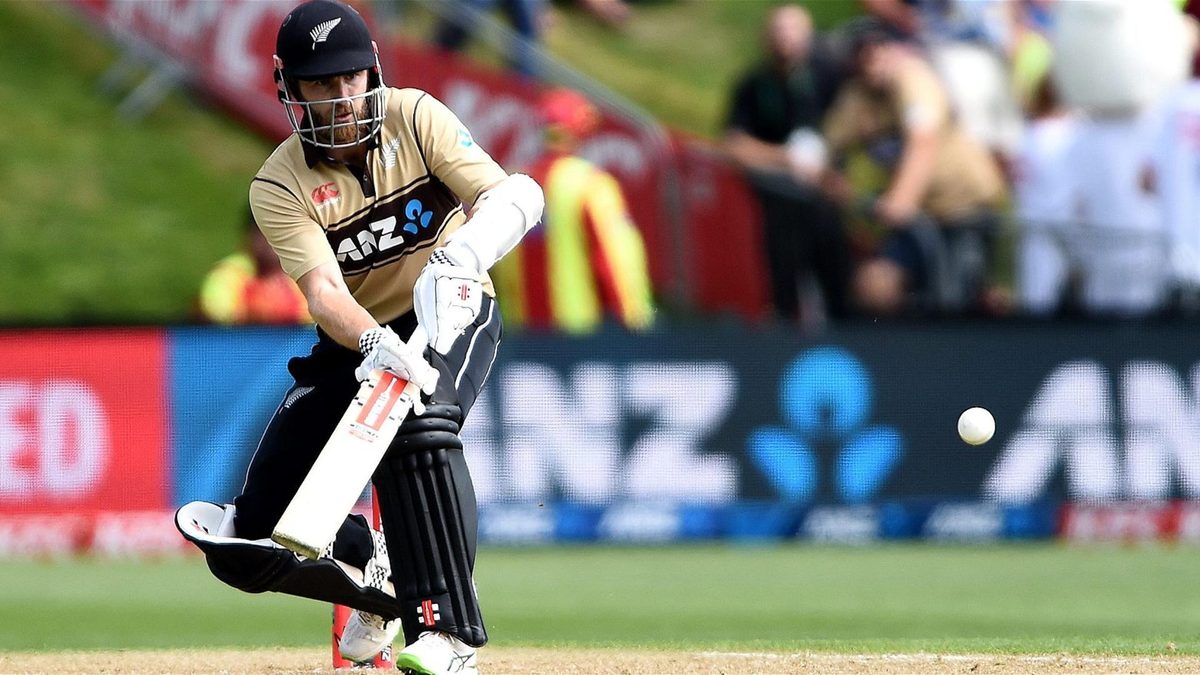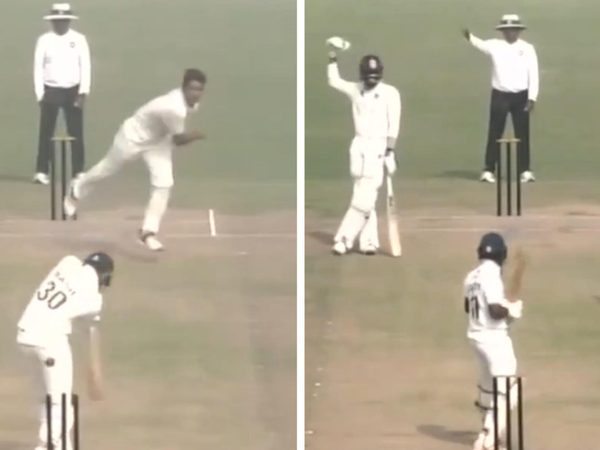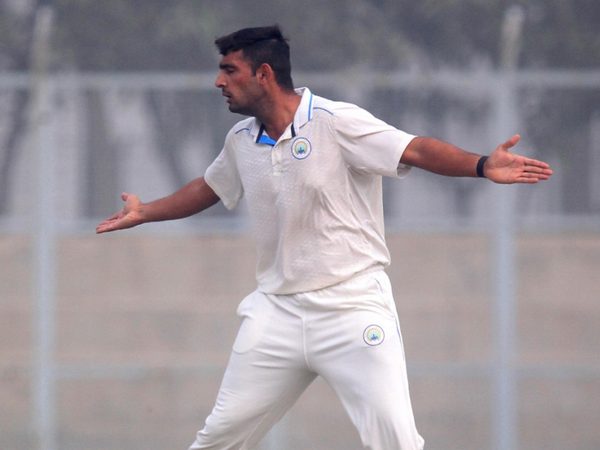
Are anchors irrelevant in T20 cricket where high-scoring games are becoming common place? Rohit Sankar explores a much-debated issue.
“He really hit these shots on back to back balls!” – the Pakistan Super League Twitter handle buzzed as Babar Azam unfurled his charm with two textbook drives – an on-drive followed by a pristine cover drive. Multiple retweets and shares followed as Babar’s elegance made him trending on the social media platform.
A few hours later, he was still trending, but for all the wrong reasons. Even as Sharjeel Khan, his opening partner, completed a Tewatia-esque transformation, Babar’s 54-ball 62 came in a losing cause as Karachi’s 196-3 in 20 overs was overhauled by Islamabad United with five wickets to spare.
He really hit these shots on back to back balls! @babarazam258 👑😍#HBLPSL6 | #MatchDikhao | #KKvIU pic.twitter.com/inVF2qT61X
— PakistanSuperLeague (@thePSLt20) February 24, 2021
Babar wasn’t dismissed until the penultimate over of the Karachi innings and had gone about his knock at a rate of 6.84 runs per over. The rest of Karachi’s batsmen scored a combined 117 off 69 balls. He played out nearly 50 per cent of the quote of deliveries in his team’s innings while scoring just 31.6 per cent of the runs.
What Babar’s extended knock did was deprive the power-hitters in the middle-order – Dan Christian, Mohammad Nabi, Colin Ingram and Imad Wasim – time in the middle. While Islamabad lost more wickets than Karachi, their big hitters had enough time on a flat wicket to affect the course of the game.
A few hours later in Dunedin, New Zealand just about managed to defend a high total (219) by four runs as Australia’s lower middle-order went berserk in the death overs. Guptill’s 50-ball 97 was complemented perfectly by Kane Williamson, walking in at No.3, scoring 53 off 35 balls. While just 26 of his 53 runs came in boundaries, Williamson maintained a strike-rate of 150-plus and was dismissed with enough time (more than 30 balls left in the innings) for Jimmy Neesham to step in and produce a cameo of 45 off 16 balls to take what looked set to be a total in the region of 190s to a 210-plus one.
The contrasting nature of the two knocks raises a question that has often lingered in the background with the evolution of T20 cricket and it’s divergent path away from the traditional formats of the game: how important is wicket preservation and the role of anchors in a T20 side?
Babar’s knock falls into the ‘match-losing innings’ category. His stand with Sharjeel was the highest partnership for any wicket in the PSL. But that he went at a scoring rate much below the match’s, thereby failing to take the team to a defendable total even with seven wickets in the bank, suggests the negative impact of his knock.
Williamson again! Finishes the Zampa over with 6! Six overs to go in the 1st innings at University of Otago Oval. Follow play LIVE with @sparknzsport #NZvAUS pic.twitter.com/pHA3PNvkw7
— BLACKCAPS (@BLACKCAPS) February 25, 2021
One could argue that it isn’t Babar’s job to accelerate. But the counterpoint is that he could he have tried to slog out and make way for the hitters ready to step in below him. This is far from a new issue. More famously, in the 2016 T20 World Cup semi-final, Ajinkya Rahane opened the innings and made 40 off 35 balls in India’s total of 192-2. West Indies lost one wicket more than India, but eased themselves into the final. Rahane wasn’t dismissed until the 16th over, facing nearly one-third of the balls in India’s innings, but scoring only just over a fifth of their runs.
A more recent example came in the Indian Premier League’s 2020 edition where Rahul Tewatia helped Rajasthan Royals pull off a record-breaking run-chase. Kings XI Punjab’s first innings total of 223-2 came with Mayank Agarwal making a 50-ball 106 (SR of 212), but his opening partner, KL Rahul went about making 69 in 54 balls. His strike-rate of 127.78 was questionable given the explosive middle-order Punjab had – the likes of Maxwell and Pooran faced 17 balls combined while Neesham never batted. Punjab’s total, while humungous, proved to be insufficient on the day on a flat wicket in Sharjah.
Being an anchor isn’t easy, because there are several challenges to juggle, especially in the first innings: judging what could be a good total on the wicket aside, batsmen have to get over the mindset ingrained from the time he picked up a cricket bat, one where wicket preservation takes precedence.
In T20, in particular, there’s no time for that. Taking 15 balls to settle down at the wicket is five per cent of the deliveries available in 50-over cricket, but in T20s, that’s more than 12 per cent. That’s not to say it is just the anchor batsmen who do this, but the frequency of such knocks becomes paramount when discussing the impact a player has in a T20 setup.
Virat Kohli, for instance, is often clubbed together with Babar Azam as one of the best all-format players. While his T20 game has significantly improved in the last few years, in IPL 2020, Kohli’s 466 runs came at a strike-rate of 121.35. He hit a boundary every 11.29 balls on average in the season, the worst for any batsmen to score more than 200 runs by a considerable margin (the next worse was 7.68).
Just 8.85 per cent of the balls Kohli faced were boundaries. In the middle overs, where his team Royal Challengers Bangalore often lost the contest after slowing down, Kohli faced 259 balls, 90 more than the next RCB batsman, while scoring at 6.4 runs per over, the third worst for anyone facing 100 balls in the phase in the league. Kohli has a strike-rate of 217.86 in the death in the last three seasons of the IPL, but often finds himself playing catch up by the end.
The ODI mindset means that these batsmen, as elegant as they are, tend to fall into the trap of playing themselves in. In a format where wicket preservation means little and strike rotation pales in comparison to boundary ball percentages, a quick start is more important than often perceived.
Even if these batsmen do manage to turn around their knock later in the innings, how often can they survive beyond 10-15 balls to turn around the negative impact they had at the beginning? One who has notably managed to rise above this challenge is Dawid Malan, ICC’s no.1 men’s T20I batsman.
Malan’s T20I average of 53.43 and a strike-rate nearly touching 150 belies the fact that off the first 15 balls, he scores at a strike-rate of less than 120.
“It’s not something in my gameplan that I want to take five balls or 10 balls [to get going] – it’s just the way it happens,” Malan said on the eve of the T20I series in South Africa. “You obviously go out and want to score as many runs as you can quickly.” He finished the series as the top run-getter, averaging over 85 and scoring at over 160. Malan has now played 19 innings in T20Is, facing 572 balls. That’s nearly 30 balls on average in an innings, a feat most batsmen find difficult to match in this format.
It shows Malan is the exception and not the rule when it comes to anchors. Being able to accelerate at the rate he does for England after getting set is ideal for a T20 anchor, but his international sample size is small and his overall T20 strike-rate is below 130. Malan’s approach is still fraught with risk. It might only be a matter of time before his slow starts prove costly for the team in international cricket. It arguably has already made an appearance in his less-than-ideal BBL 2020/21 for Hobart Hurricanes.
The Malan way is one benchmark T20 anchors could target, but maintaining that level of consistency over a career in a format as fickle as T20s is tough. The other way is the Williamson method. He has evolved into a T20 batsman who has set the modern-day standards with quick improvisation and smart thinking.
We are not worthy of Kane Williamson.
The @BLACKCAPS captain finished on 79* (55), including 50 runs from his last 26 deliveries, capping off a chase of 163 with this clutch last-ball boundary. #SuperSmashNZ
He is the master of the T20 chase.pic.twitter.com/lQWOJKF40y
— 🏏FlashScore Cricket Commentators (@FlashCric) January 29, 2021
In a T20I game against India last year, Williamson countered Jasprit Bumrah in the death overs with a slew of lap sweeps. Needing 43 to win from four overs, a well-set Williamson (on 71*) toyed with Bumrah’s mind by moving around the crease. Having worked out that Bumrah’s quicker balls are often outside the off-stump pre-match, Williamson decided to move across to use the pace and target the area behind the stumps on the leg-side. If it happens to be a slower one, Williamson would also be closer to the ball to generate more power. He hit Bumrah for 19 in the eight balls he faced from him in the last two overs of the run-chase and added another 11 in four balls in the Super Over.
Williamson’s transformation had begun in 2018 when, in David Warner’s absence at Sunrisers Hyderabad, he took the IPL by storm, finishing as the orange cap holder with 735 runs at a strike-rate of 142.44. For someone who averaged 26.72 at a strike rate of 118.01 prior to that season in T20s, that was a phenomenal metamorphosis.
Williamson still couldn’t find a consistent place in the Hyderabad setup next season once Warner returned and Jonny Bairstow became a mainstay at the top. In his first game in IPL 2020, one which came more than a week into the competition, Williamson showed his new-found vigour as a T20 anchor. From 92-2 in the 12th over, Williamson did the bulk of the scoring in a half-century stand with Bairstow – 38(21) in a partnership of 52 – but it wasn’t all about boundaries.
Finding the right mix between hitting big and strike rotation is key for a T20 anchor. Williamson has found the perfect balance of late. In IPL 2020, Williamson hit a boundary every 6.5 balls, while scoring 0.76 runs per ball off non-boundary balls. Kohli, who had the highest score off non-boundary balls (0.88) hit a boundary just once every 11 balls on an average. It shows the gap that Williamson has bridged to perfection.
[breakout id=”0″][/breakout]
He has found the ideal concoction of staying busy and scoring boundaries and, unlike other anchors, helped take the pressure off the rest of the batting line-up. Without removing the inherent elements of his game, one that makes him an unquestionable beast in Tests and ODIs, Williamson has adapted to T20s and its growing demands. The question is whether the other players of his ilk can follow suit.








